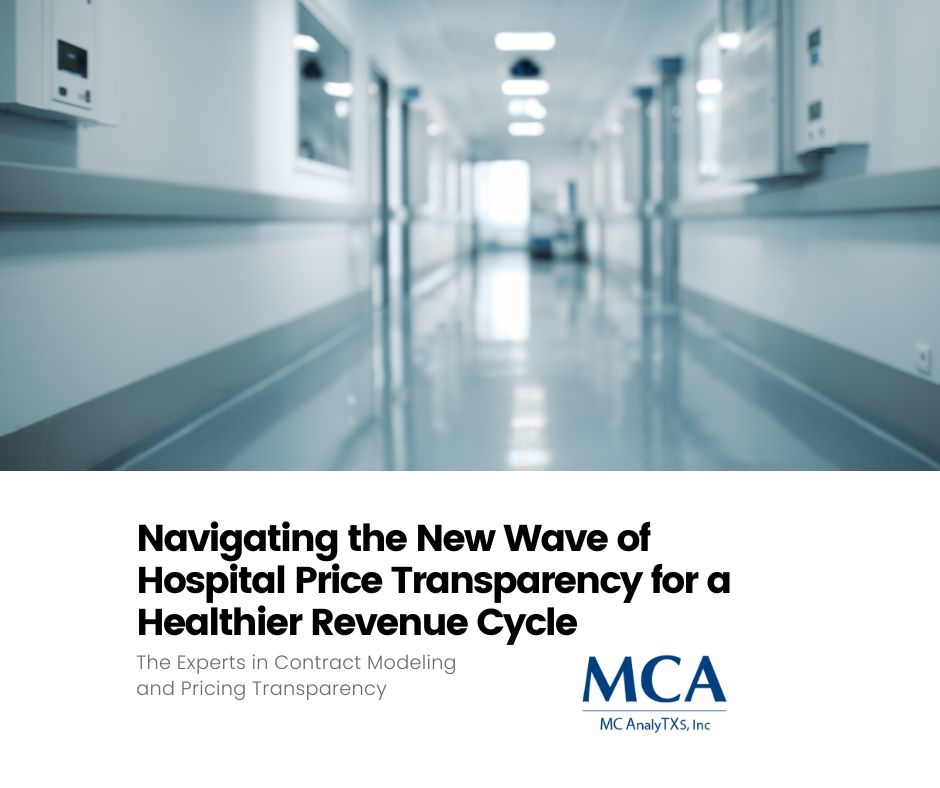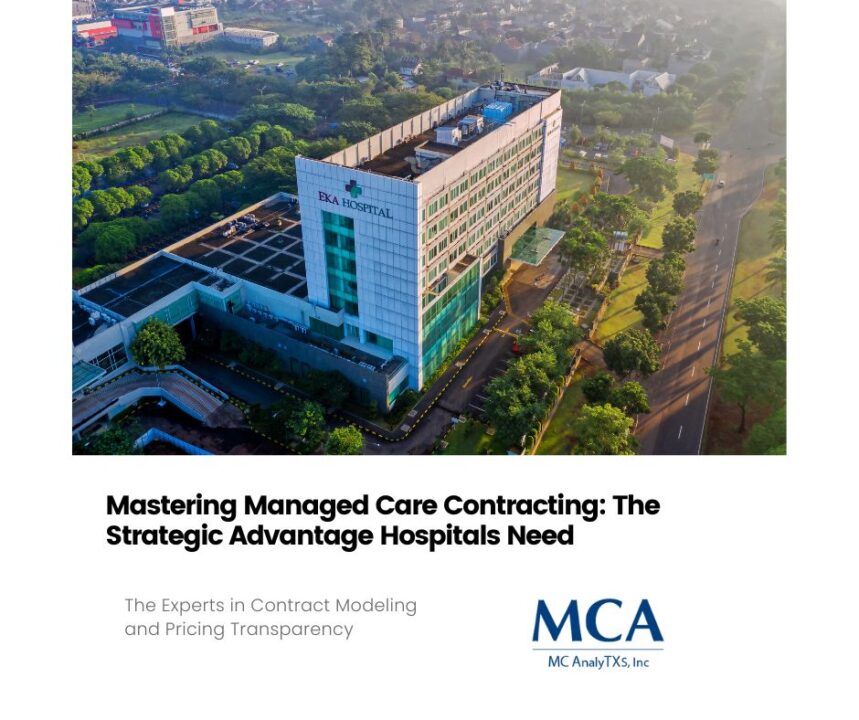

Navigating the New Wave of Hospital Price Transparency for a Healthier Revenue Cycle
Unveiling Price Transparency in Healthcare
The healthcare industry is undergoing a revolutionary transformation, with the spotlight now firmly placed on hospital price transparency. For managed care directors, revenue cycle VPs, and healthcare executives, understanding the implications of these changes is crucial. This article dives into the complexities of hospital price transparency, exploring its latest developments and the impact on revenue cycle management.
Latest Developments in Hospital Price Transparency
Hospital price transparency is no longer just a buzzword; it’s becoming a reality. Recent regulations by the Centers for Medicare & Medicaid Services (CMS) mandate hospitals to provide clear and accessible pricing information. This move aims to empower patients, allowing them to make informed decisions about their healthcare. The rules require hospitals to publish a list of standard charges for services and items, including gross charges and payer-specific negotiated rates.
The push for transparency is fueled by consumer demand for clarity and the need to reduce unexpected medical bills. For healthcare providers, this means a shift towards open, honest communication about pricing structures. While these changes present challenges, they also offer opportunities to build trust and enhance patient satisfaction. Hospitals must adapt quickly to these new requirements to remain competitive and maintain compliance.
Understanding these regulations is essential for healthcare leaders. By staying informed about the latest developments, managed care directors and revenue cycle VPs can better position their organizations to thrive in this evolving landscape. Compliance is not just about following rules but also about leveraging transparency as a strategic advantage.
Implications for Revenue Cycle Management
The impact of hospital price transparency on revenue cycle management cannot be underestimated. For managed care directors, revenue cycle VPs, and healthcare executives, these changes present both challenges and opportunities. The transparency requirements demand a reevaluation of existing processes and strategies to ensure compliance while maintaining financial stability.
One significant implication is the need for accurate and consistent pricing information across all platforms. Revenue cycle teams must collaborate with clinical and financial departments to gather and maintain up-to-date data. Ensuring that pricing information is accessible and easy to understand for patients is crucial to avoid confusion and enhance patient experience.
Additionally, transparency opens avenues for improved negotiation with payers. By understanding and communicating true costs, healthcare organizations can engage in more informed contract negotiations. This shift towards value-based care can lead to mutually beneficial agreements, ultimately enhancing the organization’s financial performance.
Healthcare leadership plays a pivotal role in steering their organizations through these changes. By fostering a culture of transparency and collaboration, executives can ensure a smooth transition and capitalize on the opportunities presented by these new regulations.
Best Practices for Adapting Revenue Cycle Strategies
Adapting revenue cycle strategies to comply with new transparency requirements requires a comprehensive approach. Healthcare organizations can benefit from implementing best practices that align with the evolving landscape of hospital pricing transparency. By doing so, they can ensure compliance while optimizing their revenue cycle processes.
First and foremost, organizations should invest in technology solutions that facilitate accurate data collection and reporting. Automated systems can streamline the process of gathering and publishing pricing information, reducing the risk of errors and ensuring consistency across platforms. These tools can also provide valuable insights into pricing trends, helping organizations make informed decisions.
Collaboration between departments is another critical aspect of adapting to transparency requirements. Revenue cycle teams should work closely with clinical, financial, and IT departments to ensure a holistic approach to compliance. Regular training sessions can help staff understand the importance of transparency and equip them with the necessary skills to implement best practices.
Lastly, organizations should prioritize patient communication and education. By providing clear and concise information about pricing structures, healthcare providers can enhance patient satisfaction and trust. Engaging patients in discussions about pricing not only empowers them but also fosters a sense of partnership between healthcare providers and patients.
The Long-Term Benefits of Hospital Price Transparency
The shift towards hospital price transparency offers numerous long-term benefits for healthcare organizations. By embracing transparency, healthcare providers can enhance patient satisfaction, improve financial performance, and build trust with their communities. These advantages extend beyond compliance, creating a solid foundation for future success.
Increased patient satisfaction is one of the most significant benefits of transparency. When patients have access to clear and understandable pricing information, they are more likely to feel empowered in their healthcare decisions. This sense of empowerment can lead to higher levels of trust and loyalty, strengthening the relationship between patients and providers.
Transparency also plays a crucial role in improving financial performance. By engaging in value-based care and informed contract negotiations, healthcare organizations can optimize their revenue streams and reduce financial risks. The insights gained from transparency initiatives can inform strategic decisions, driving long-term growth and sustainability.
Ultimately, transparency fosters a culture of trust and accountability within healthcare organizations. By prioritizing open communication and collaboration, healthcare leaders can create an environment where all stakeholders are aligned in their pursuit of excellence. This cultural shift not only benefits the organization but also contributes to a more equitable and sustainable healthcare system.
Conclusion
Hospital price transparency is reshaping the healthcare landscape, offering both challenges and opportunities for managed care directors, revenue cycle VPs, and healthcare executives. By staying informed and adapting revenue cycle strategies, organizations can thrive in this evolving environment.
The latest developments in transparency regulations demand a proactive approach, focusing on collaboration, technology, and patient engagement. By implementing best practices and learning from industry leaders, healthcare organizations can ensure compliance while optimizing their revenue cycle processes.
The long-term benefits of transparency extend beyond financial performance, fostering trust, accountability, and patient satisfaction. By embracing transparency as a strategic advantage, healthcare leaders can drive positive change and create a more sustainable healthcare system for the future.
To learn more join our upcoming webinar.





